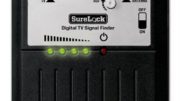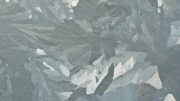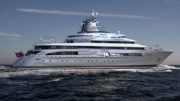You can find anything on YouTube. I’m not sure where YouTuber “TREKWORLD” got this footage, but it’s original bluescreen footage of the USS Enterprise model from the 1960s. These are the actual films they used to create the optical composites, fed through 4K AI upscaling. You know I had to watch this all the way through.
There were really only about a dozen total exterior shots used throughout the series. They were cropped, flopped, and zoomed to look like a lot more. Most used the 11-foot model which now resides in the Smithsonian. It may just be nothing but painted wood, but when I was a kid it seemed totally real.
By today’s standards the model seems simple, but keep in mind that in the 1960s people watched on standard-definition 19″ screens. More detail than this would have been wasted.
When Desilu Studios shot this footage, they used one of several processes to insert it onto a starfield. The ship has a solid blue background, and nothing on the ship had any blue coloring. Most likely they developed the footagein such a way that the blue parts were black. Then, they made a reversewith an overexposure so that what you saw was a completely black shape on a white background. This was combined with footage of a “starfield” (which I’m told was a velvet-lined box with some holes and light bulbs) so that nothing overlapped anything else.
It’s a little easier today
With computers, we don’t have to mess with all that chemistry and nonsense. We just use simple plugins. It took me about 10 minutes to isolate the ship and impose it on an image of our corporate headquarters. I added a little motion to the shot, and this was the result.
Honestly, this took me about ten minutes and while it’s not Hollywood quality, it’s better than the 1960s TV show. Those effects took weeks to create and cost a lot of money at the time, and today’s tools really just blow them away.
It’s not just me
Yes, it’s true that I have pro-quality video editing software. I could actually take a much better render of the Enterprise and superimpose it with a lot more dynamic tracking. But that wasn’t what I wanted. I wanted to use the original footage effectively, and I think that’s what I did.
But honestly you could do the same with a variety of free programs. Since Instagram and Snapchat came on the scene, a lot of these filters have become incredibly easy for average to use… and they’re almost always free. I’d be curious to see if anyone else out there could take this same bluescreen footage from the top video and do something even more convincing than I did.
If you do, leave a link to the YouTube in the comments below.





